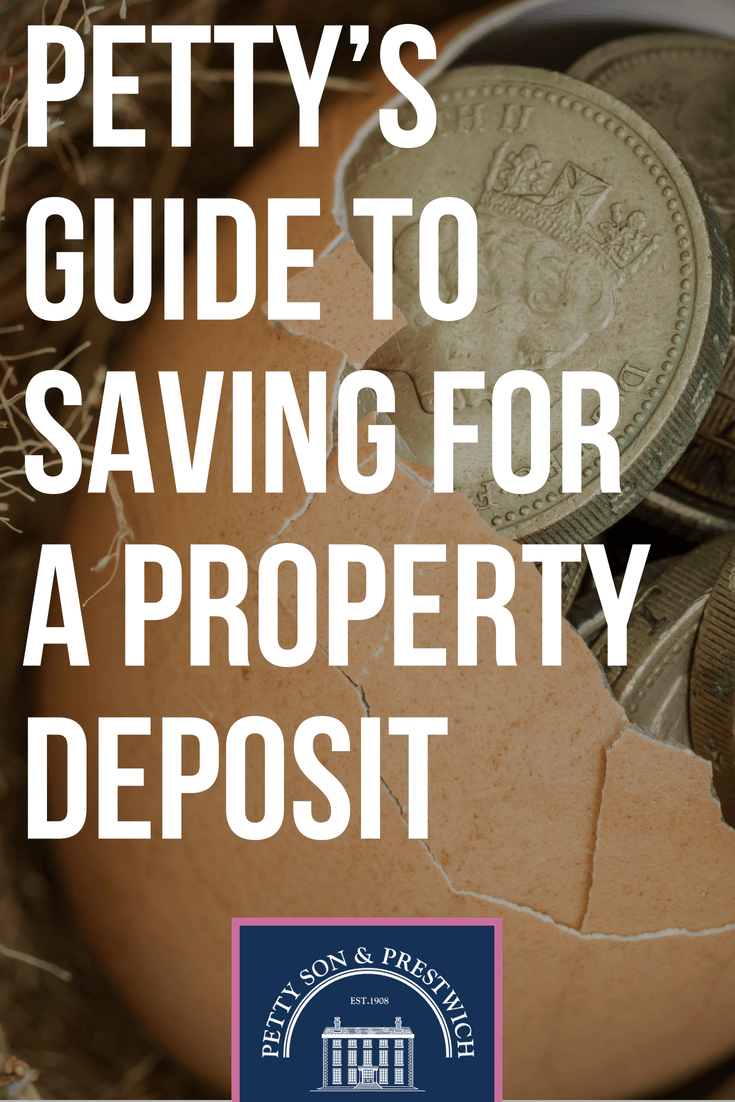Having a big enough deposit to get the mortgage that you need is often the stumbling block for many potential homeowners. Saving money is tough in today’s economy and if you are already renting putting money aside for the chance to buy can seem like a daunting prospect.
While we would never dream of telling anyone that raising a deposit is easy, there are a few things that you can do to make things easier. Here in our latest guide, we lay out some of the things that you can do to make putting together a decent deposit a much more manageable proposition.
1. Explore every possibility
For some, finding enough money for a deposit as a first-time buyer is simply out of the question, but that shouldn’t stop you exploring all of the avenues that may eventually lead you to becoming a homeowner. Gathering up a 20% deposit can even be tough for those sitting around the higher tax rate, so what are your options?
- Don’t go it alone – Although the dream may be to own your own home, sometimes pooling your resources with friends or family members can be an ideal way to get a foot on the property ladder. While there are certainly considerations to take into account – such as what happens if one of you meets the love of your life and wants to sell up – buying a home between a few people can be a great way to get started.
- Borrow, but not from the banks – We’ve all heard the phrase ‘bank of mum and dad’, and there’s a good reason why it has gained such popularity over the last decade or so. Borrowing informally from someone close to you can reduce costs significantly and give you the leg up that you need to make your first purchase in the property market.
- Secure a guarantor – Some mortgage providers will offer favourable deals to those who can provide a guarantee that the mortgage will be met by someone other than yourself should you fall into financial difficulty. Again, parents are the obvious choice here, but you can effectively have anyone perform the duty – providing they are willing to do so, of course.
- Shared equity schemes – Shared equity schemes, such as Help to Buy, give you the opportunity to buy a new-build home with a reduced deposit – often as low as 5%. The shortfall in the deposit amount is typically loaned to you by either the developer who is building the property or the government and can amount to as much as a further 20% should that be required.
As with any loan, you will need to pay it off eventually, but they are generally free for the first five years of the term. Careful planning will need to be made to ensure that you have enough to cover the increased repayments when the free period ends, but these schemes can be a great way to get your first home if you are struggling to put together a full deposit.
- Help to Buy: Mortgage Guarantee scheme – This option allows you to take out a mortgage on either a new-build or an older home and works in the same way as a regular mortgage. The difference is that your lender will be offered the chance to buy a guarantee on your mortgage loan from the government, giving them the opportunity to offer you a higher loan-to-value mortgage than they would otherwise be willing to do. To find out if you are eligible, click here.
- Shared ownership – Shared ownership does pretty much what the name suggests; you own part of the home along with a third party, usually a housing association. You will need to keep up your mortgage repayments on the percentage that you own and pay rent on the rest, but the rent is usually offered at a subsidised rate, making the scheme an affordable option for many. In order to be eligible for shared ownership you will need to meet certain criteria, full details of which can be found here.
2. Find your level
Once you have explored all of your options, you will have a far better understanding of how much you might realistically need to save before you can consider buying your own place. With a more concrete figure in mind, things become a lot clearer and the path to achieving that goal may not look as daunting once you begin to break things down even further.
The key to building a savings plan that you can stick to is to be realistic. Saying that you are going to save £1,000 per month may get you to where you need to be far quicker on paper, but if that figure is going to be burdensome to you then the likelihood is that you will give up way before you reach your target.
We live in a very now orientated society, so extending your savings period from two years to five may seem like forever. However, it’s worth bearing in mind that sticking to a realistic plan will always bring about quicker results than any other stop/start savings program you might come up with.
3. Work out where to save
Now that you have figured out the amount that you can set aside each and every month, the next step is to find the best savings account for your nest egg. Obviously, you are going to want to make the money that you save work as hard as possible, so doing a little homework is vital.
Thankfully, it has never been easier to perform research like this as there are a plethora of comparison websites out there waiting for you to put your details into their databases. However, it’s worth keeping in mind that many of these sites are run by the umbrella companies that own the lenders that they recommend, so you’ll need to visit more than one to get a true picture of what savings accounts are best for you.
Another thing to remember is that not all savings accounts are the same and some will have different features to others. Make sure that you read the details before committing to a certain type of account and, if you are in any doubt whatsoever, always contact the account provider before putting pen to paper.
4. Don’t forget ISAs
If you are a first-time buyer, there is a new form of individual savings account, or ISA for short, that is perfect for your needs. Help to Buy ISAs were introduced back in December 2015 and are available to anyone over 16 years of age that has never bought a property before.
Why are Help to Buy ISAs so beneficial? Well, the main reason is the fact that if you do end up using your savings for the purchase of a home, the government will add an additional 25% to your savings pot, up to a total of £3,000! For full details on the new way to save, check out the Money Saving Expert article on the subject here.
5. Make your first deposit
Now that all of the groundwork has been done, all that remains is to get started. It may be clichéd, but a journey of a thousand miles really does begin with a single step, so the sooner you start, the sooner you reach your destination.
Setting up a standing order is always advisable once you begin as it will make it less likely that you’ll miss a payment into your new savings account that way. Once it has been up and running for a little while you’ll begin to get used to that money going out and things will become easier.
In fact, it is often said that it’s far easier to go from £1,000 to £5,000 than it is to reach £1,000 when you are starting from zero. Make saving a habit and before long you will have caught the bug. Once that happens, nothing will get in the way of you and your goal.
If you would like any further property related advice, our team of knowledgeable agents are always on hand to help you fulfil your dream of becoming a homeowner. Give them a call today on 020 8989 2091 (Wanstead office) or 020 8504 5403 (Buckhurst Hill).


As Petty’s MD, John steers the ship. He is, however, first to admit that the team around him run the show, and he’s incredibly proud of each and every one of them. Sporty and studious, caring and loyal, John is a father of two wonderful children (and Cooper the dog).
020 3370 8784 / Email Directly